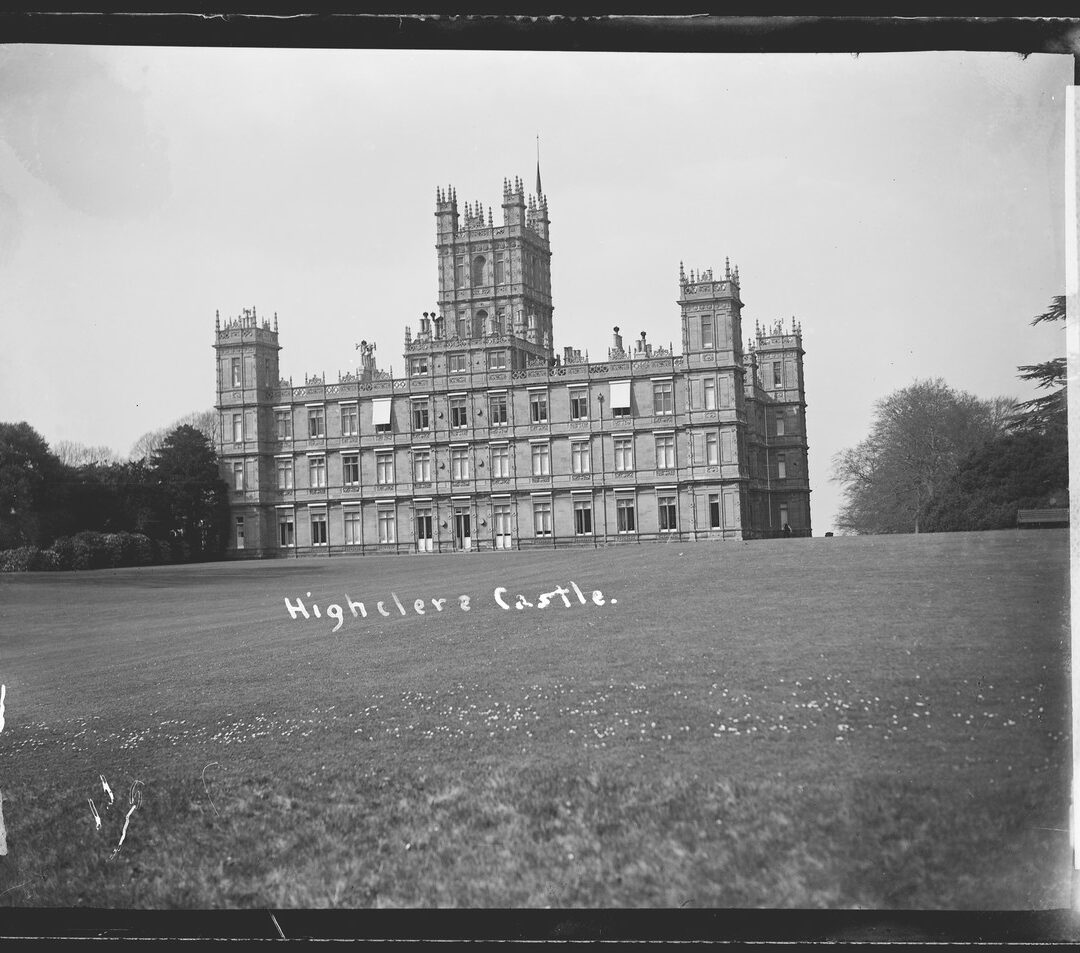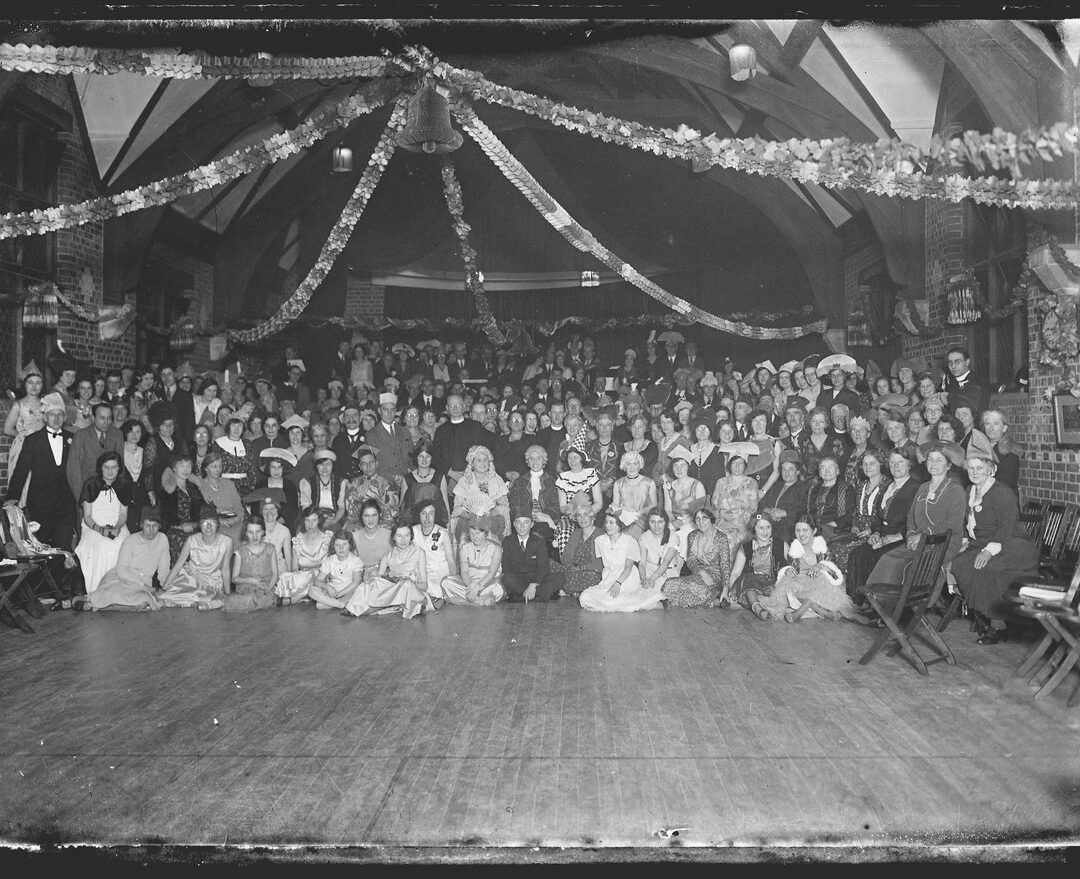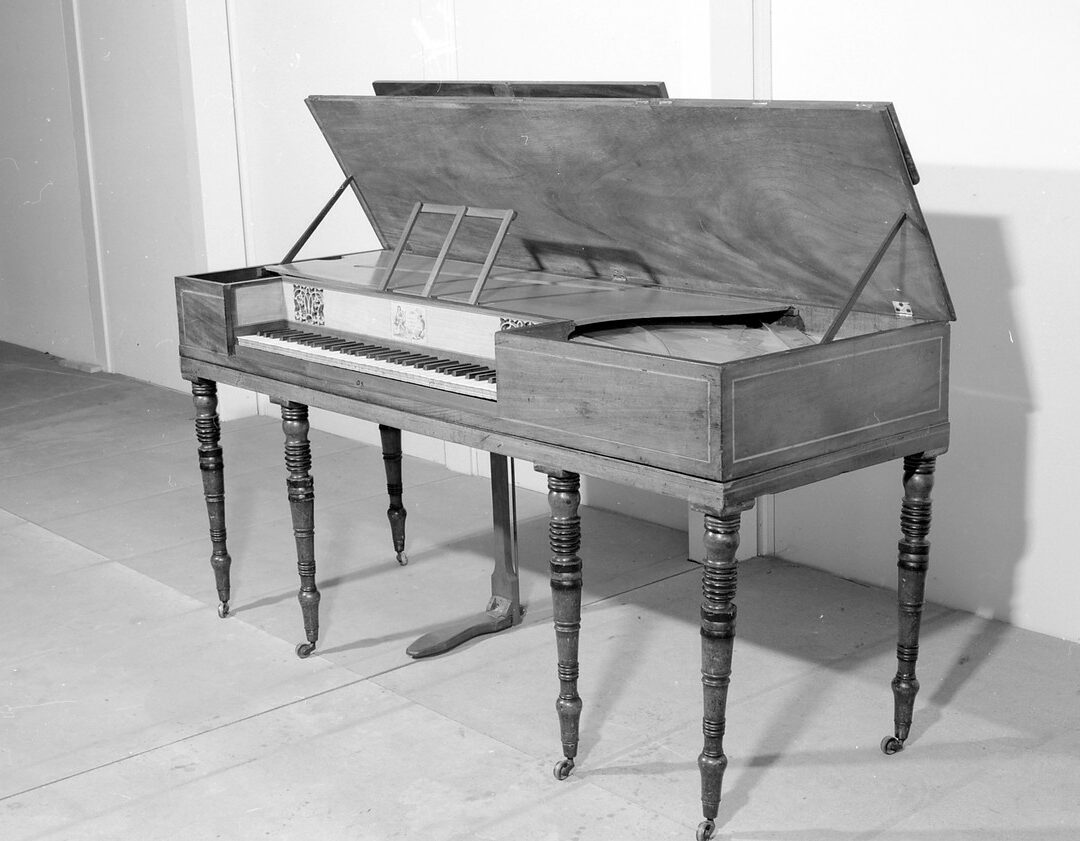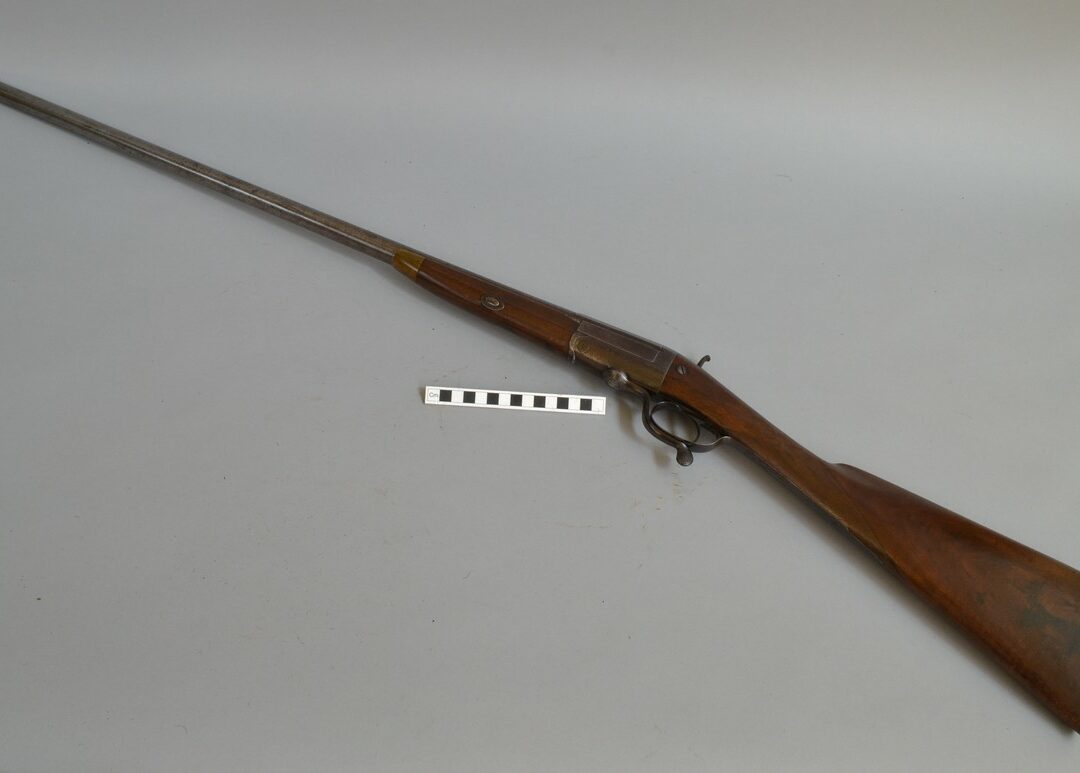The history of the servants’ ball
Learn about the tradition of the servants' ball, including a first-hand account of how these events continue today.
The servants’ ball has had a long tradition in the country house estates of Britain and only really died out with the onset of the Second World War. They were a cultural melting pot where popular music of the day would be performed alongside traditional country dance tunes.
Throughout the 19th century and into the 20th, these balls were commonplace in large country homes. A Christmas special of Downton Abbey in 2011 featured one of these events, where members of the Crawley family are seen dancing and fraternising with their servants as equals. Gifts are given by Lady Mary to various servants, and close personal relationships are suggested between nobility and workers.
But how close is Downton‘s depiction to the truth?

What was a servants’ ball?
Nobody knows exactly where and when the tradition of the servants’ ball at Christmas came from. But it may have its origins in ancient Greek and Roman culture. In particular, the winter festival of Saturnalia reversed the normal social hierarchy, with masters waiting on slaves for a day.[i] As Downton shows, servants’ balls were often held shortly after Christmas. Twelfth night was a popular choice. An annual ball was held at Welbeck Abbey on this day in the early 20th century.[ii] Particularly wild country homes also held servants’ dances on the lord or lady’s birthday, with a scandalous few scheduling them once a month![iii]

So how did the etiquette of these events compare to Downton? Unfortunately, servants weren’t always as chummy with the country home’s noble family. Although the so-called ‘people from upstairs’ were usually invited to servants’ balls, few of them attended. For the nobility, parties were less about merriment and more about prioritising social advancement by making new connections, and this would be impossible at the servants’ ball. So even if they did attend, they would often leave early.[iv]
In addition, the burden of organising and funding the servants’ ball typically fell on the servants’ shoulders. The steward and his wife would take on the role of lord and lady of the manor, sending out invitations and greeting guests as they arrived. At the Trentham Estate in 1838, a footman named Thomas collected £1 16s from amongst the servants to pay for a violinist. Finding he only needed the 16s for this, he spent the remaining funds on wine![v]

Although a real servants’ ball wasn’t quite as romanticised as the Downton version, it’s easy to be too cynical about them. On the whole, our sources suggest that servants of country houses thoroughly enjoyed their Christmas parties. Dancing usually went on into the early hours, with the ‘polka’ being a particular hit.[vi] Excited attendees would save up their wages for weeks to buy new outfits, wearing fresh white or coloured silk if they could afford it.[vii] In many cases the cost of paying for music was mitigated by the servants’ own musical talents. The aforementioned Thomas played the clarinet, with another porter being skilled on the flute. Servants were often talented singers, as they sang to each other to pass the hours of monotonous chores.[viii] It’s also worth noting that some servants’ balls were so famous that they were major social events in the calendars of even royalty. For example, the 1920 servants’ ball at Sandringham Palace, occurring at the same time as the ball in Downton, was attended by three queens – Alexandra, Mary and Maud.[ix]

Although a real servants’ ball wasn’t quite as romanticised as the Downton version, it’s easy to be too cynical about them. On the whole, our sources suggest that servants of country houses thoroughly enjoyed their Christmas parties. Dancing usually went on into the early hours, with the ‘polka’ being a particular hit.[vi] Excited attendees would save up their wages for weeks to buy new outfits, wearing fresh white or coloured silk if they could afford it.[vii] In many cases the cost of paying for music was mitigated by the servants’ own musical talents. The aforementioned Thomas played the clarinet, with another porter being skilled on the flute. Servants were often talented singers, as they sang to each other to pass the hours of monotonous chores.[viii] It’s also worth noting that some servants’ balls were so famous that they were major social events in the calendars of even royalty. For example, the 1920 servants’ ball at Sandringham Palace, occurring at the same time as the ball in Downton, was attended by three queens – Alexandra, Mary and Maud.[ix]
Christmas was not always a time of relaxation and festivity for servants. Cooks were expected to prepare lunch, maids had to keep the house spotless for guests, and gamekeepers were tasked with arranging the Christmas shoot. Yet the servants’ ball, despite its flaws, allowed all members of the household to share at least a little festive joy.
Update: Christmastime in a modern country house
13/12/2021
When we shared this blog to our social media channels, we were delighted to hear from St Mary MacKiller. St Mary worked as a professional servant during the 1980s, and we reached out to ask about her experiences. Read her brilliant response below. Learn about the work and duties of a professional servant at Christmas in a modern country home.
I worked in several big houses (and their owners’ many smaller houses!) throughout 1985 to 1990, but spent long periods as Cook, Matron (and groom) in an elite girls’ prep school which was a peculiar dichotomy, being both very innovative but at the same time deeply seated in hierarchical tradition. Late in the 20th century, staff conditions and households were obviously markedly different from the late 1800s and pre-WWII period, but in Old Money and some Royal households, old values held true and expectations were that permanent staff, especially resident staff, maintain etiquette very closely aligned with Victorian protocols.
The school had a full household staff, including head and under gardeners; the ubiquitous ‘Man’ (handyman) and ‘Boy’ (who was over 30); Cook (days) and full kitchen staff (Victorian style); morning and weekend Cook (me); laundresses; seamstresses; cleaners; head matron and under matrons; head groom and grooms; and more. And of course, the endless supply of ‘women from the village’ who would be called upon when extra hands were needed. There were also a full contingent of teaching staff.
Apart from Royal houses, nowhere else had the full of contingent of staff, although the hierarchy existed even where staff was skeleton or brought in casually. As the most senior ranked and resident (or only) staff member, with a sound knowledge of British etiquette, I was expected to ensure all hired staff were briefed in all things required of their station.
As the only resident staff in house (estate manager, game warden, butchers, gardeners, cleaners, and PA all lived in cottages or the villages) I was always invited to join the family on Christmas morning and given a truly generous stocking, which was the loveliest, inclusive gesture. However, I had also been up all night before, peeling chestnuts, prepping monstrous turkeys for dawn cooking times, stuffing pheasants “for people who don’t approve of turkey”, and waiting for last minute deliveries from Fortnums and Harrod’s, including offering drivers a meal and cuppa before they drove back.
After stockings, the family would pitch in and chaotically make their own breakfast (which involved getting in my way and asking me how to make it) so I could continue the gargantuan prep task for Christmas lunch, which, aside from extended family, was something of an Orphan’s Christmas for aristocracy, celebrities, and the landed gentry who didn’t have anywhere else to go. Some of these guests were houseguests and it was expected that I would serve them in their rooms or the breakfast room if they required but most preferred the jollity of the kitchen. Staff and casual staff would arrive and this gave me a chance to start barking orders which was a sign to the lady of the house to get everyone out of my kitchen! I had the option to keep staff throughout the meal but I wasn’t going to take anyone away from their family’s Christmas lunch, so I sent staff home once the meal was on the verge of kick-off, and I’d had time to wash and change into suitable dress.
From that point, it was all me! No valets or servers of any ilk, so the mistress of the house got to make a big show of ‘helping’, bless her, and we did forego silver service (thank goodness, or food would have been cold). The older children would be rounded up and, as it was known I was a school matron and cook during term times, the whole ‘boarding school’ experience was revisited and courses cleared, with many a gentleman choosing to relive being ordered about by Matron, and rather too enthusiastically opting to skivvy. I was plied with good wine (but in this household, that was par for the course – Cook always got a glass or two of everything being served), but I still had to maintain perfect timing for multiple courses and service, with an increasingly drunken and rowdy crew of helpers.
I was young and a perfectionist so I did struggle with it, as presentation and status quo were really crucial to a ‘career’ servant, even in the 1980s. I come from a family steeped in feudal British etiquette; historically we had servants but, in typical Monarchist manner, were servants of a type (my grandfather was, amongst other things, friend and personal physician to King George VI) so understanding and fitting into service was easy as I was raised on both sides of the stairs.
My parents talked of Christmas parties and balls for staff, with the switch in roles, so it was something I’ve always known to be acceptable practice, but during my time, staff numbers and the change in the retained status of staff, and their increased personal leisure time, had completely changed the dynamic. Resident staff were brought closer into the family orbit at Christmas, whereas non-resident staff by then tended to have something more akin to ‘office’-type Christmas parties. The latter change also manifested because of increasing autonomy of reduced, and in some cases more qualified, staff, and the awareness of the reliance of householders on their staff (and not the other way around).
By the 1980s, the Servants’ Ball had morphed into a more personalised acknowledgment of retained staff within the old and established households where loyalty and servitude were still held in high regard. ‘New money’ during the ‘80s was also encroaching on this status quo, with newly enriched people wanting ‘posh’ staff but not understanding the symbiotic relationship of old money retainers and their often generational servant connections with their employers.
Keep exploring The MERL
The Museum of English Rural Life tells the story of the history of rural England and its people. Plan your visit to the museum, support our work with a donation, or keep reading stories from the countryside, past and present.




Thank you for an absolutely fascinating article, and I was so interested in St. Mary’s first-hand account. I recently watched the Downton Abbey episode with the Servants’ Ball and had been wondering about the historical reality of the event. An excellent read!